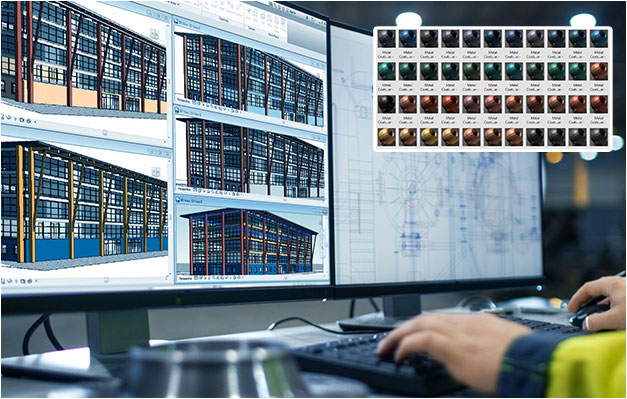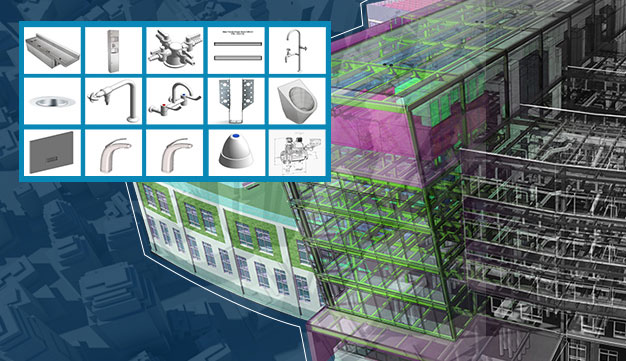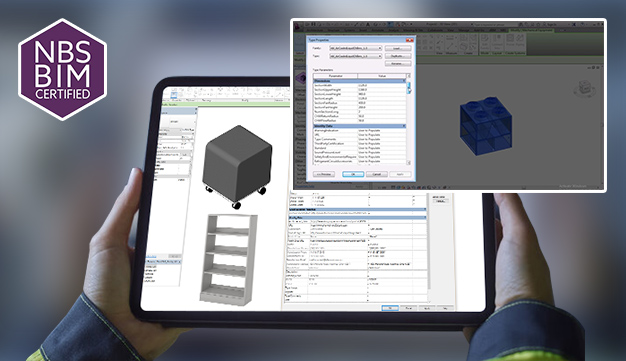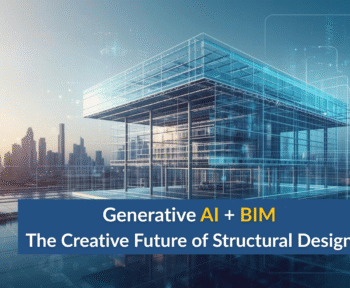According to a survey by Dodge Data & Analytics, 65% of the participants have responded with yes for positive ROI from their investment in BIM. The same study also finds that more than 26% believe in having an ROI of 25% or more with BIM implementation.
Be it the construction firms, architects, engineers, or contractors, BIM makes it easier to plan, collaborate, share, and manage building information. In the same context, for product manufacturers, BIM content is the key that helps in translating, configuring, or automating the product development process by reflecting the design feasibility and improving the efficiencies.
As the 3D representation of products, BIM content comes embedded with the metadata details such as the model no, material specifications, MEP connection sequences, as well as the service information. That’s a lot of useful data – especially for customers/manufacturers to align their requirements to the use of the building products.
Building products that can be designed leveraging BIM Revit library

Building product manufacturers, as well as designers, always have the challenge to produce innovative product designs to attract potential customers. Along with retailers and the construction project team, there is another key challenge to scale up designs to fit the site.
There was a time when customers and project teams used to struggle to find appropriate product designs that can be scaled up or down and fit into the build space with unconventional facades and other building extensions.
However, with the inception of Revit family creation, designing and developing generic building products became much easier and hassle-free.
And now, with BIM content with extensive metadata details such as exact object specifications, assembly sequences, as well as installation and service information – custom building product designs have been much accurate and quality intensive.
Product categories that are getting designed and produced using BIM content
- Kitchen equipment and fittings
- Windows and doors
- Bathroom fittings
- Piping fixtures
- Floors and ceilings
- Lighting fixtures
- Home decors
- Custom facades
- MEP components
- Structural components, etc.
How will manufacturers benefit from BIM content?

According to another popular study by Dodge Data and Analytics, nearly 87% of the respondents have agreed to witness a positive result from implementing BIM into their traditional systems. Isn’t that a whopping number – especially, as all business houses are concerned with the key performance indicators translating from the very number of returns on investment?
Before coming to the point of how manufacturers will be benefitted from BIM content, it is required to understand the practical meaning and significance of a BIM object.
BIM objects – component and layered
A BIM object is a comprehensive piece of information that includes a product’s physical characteristics, details on its appearance, and behavioral data to serve the intended purpose. The component BIM objects contain the metadata of the building products (doors, windows, etc.) with fixed shapes and sizes that can be scaled up and down with a formula-based elasticity. The layered BIM objects contain the details of the products (example – ceiling, roofing, carpets, etc.) that don’t usually have a fixed shape and size.
It’s pretty evident that BIM content embedded with so much detail of the products, product manufactures can make use of this data for developing designs that are parametrically scalable and can be fitted into a variety of build spaces complementing the designs.
BIM content is an opportunity for manufacturers to create a huge digital portfolio of products with ‘n’ number of parameters for their users to interact with or within each asset either as a single product or a combination of products reflecting the required building design.
BIM content best practices for manufacturers

Though the process of creating BIM content itself takes care of simplifying it for the designers to follow and the manufacturers to refer afterward, there are still a few key thumb rules or best practices that make the entire process clear and accurate.
Simplifying the product model – Simplifying the model geometry by removing the proprietary design details or intellectual properties is one of the key checklists to be followed when creating and passing the BIM content.
Metadata integration – Integration of critical product data into the BIM content with as much detail can help designers and project teams in design and installation accuracy.
Designs adhering to standard engineering guidelines – Product designs with the standard specifications allow customers to configure them as needed without the hassles of value engineering themselves.
Standard format and process of deployment – The BIM content must be exported in the standard formats such as .ifc or .rfa, allowing contractors or manufacturers to make use of it without additional conversion hassle.
The emergence of NBS BIM object standard

As more and more products are getting designed and deployed using BIM content, to further simplify the job of manufacturers, designers, and contractors around the globe, the NBS BIM object standard has been defined.
With this BIM object standard in place, all BIM contributors will develop the objects in a common framework – Common Data Environment (CDE). This can be treated as a benchmark or quality yardstick for BIM content that will allow designers and manufactures to collaborate, exchange, and share information that can be easily understood and assessed.
Apart from consistency, the NBS BIM object standard is helpful in streamlining the product geometry, behavior parameters, and the presentation of BIM objects across construction platforms and industries. Though, this standard doesn’t limit the BIM object creation process or usage of any tool.
The future evolution benefiting from a BIM approach

Over the last decade or so, BIM has been a defining element of growth in the construction industry. With technologies like parametric modeling IoT-based transformation, the construction industry is no longer the same it used to be.
Demand for customized building products is steadily growing, and keeping the changing nature of customer requirements, digitization, and growing competition, manufacturers will get a sustainable business only with BIM and BIM content. Also, software like AutoCAD, Revit, BIM 360, etc., and support for advanced platforms have created the base for taking the product design and experience to the online virtual experience mode.
It’s pretty clear from a building product manufacturer’s perspective – with BIM and BIM content, there is a concrete chance of achieving competitive differentiation through providing versatile designs and dedicated product-specific services, among others.
Adapt the change – grab the opportunity to elevate market share
As the construction industry is rapidly changing and demand for tailor-made building products are on the rise, BIM can keep product manufacturers afloat against the tides of change and competition. eLogicTech Solutions is a 3D product modeling service provider with a specialist team that understands the industry requirements as well as architectural geometry to help develop BIM parametric product models. As a leading BIM service provider, you can rely on eLogicTech’s experience and cutting-edge infrastructure to deliver quality products adhering to global standards and practices.
For a quick consultation on your requirements or how to go about creating BIM content for building product manufacturing, contact us.







